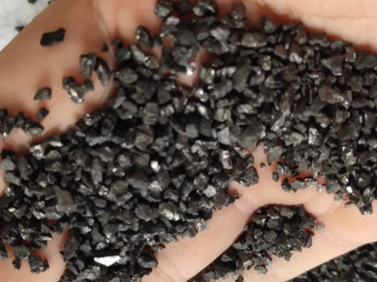Code for construction of refractory and thermal insulation materials for metallurgical heating furnace
Update time: 2022-10-08 Focus on:1131

In the metallurgical industry, the heating furnace is a device that heat metal objects such as iron plates and steel plates to rolled into forging temperature. The application of heating furnaces is widely used, such as petroleum, chemical, metallurgy, machinery, heat treatment, surface treatment, building materials, etc. There are different types of heating furnaces. Similar to other industrial kiln, the heating furnace consists of the shell steel plate and the inner lining refractory material. During the assembly of the refractory material for the furnace lining, the following standards must be met:
1. The rust, welding residue and other dirt on the surface of the furnace should be removed before the furnace lining construction; the insulation nail (or insulation stent) should be welded should be anti -corrosion treatment in the furnace body.
2. The welding material should be selected according to the material of the thermal insulation nail (or insulation stent); the insulation nail (or thermal insulation bracket) should be firmly welded and shall not be skewed.
3. The bottom is a circular anchor part of the anchor. The other anchors should be welded along both sides on the wall board.
4. The installation of folding ceramic fiber blankets shall meet the following requirements:
1) Before installation, apply adhesives at the installation site. The adhesive should be evenly brushed and no leakage point.
2) Folding ceramic fiber blankets should be flat. Uniform, the shape and size should meet the design pattern requirements, and the edges should be neat.
3) When installing, all the supporting rooms should be installed, paved and covered, and then fixed with fixed nails after compacking.
4) The indirect sewing of the blanket should be tight, and there must be no loosening, and no naked metal gaps and holes must be appeared.
5) When installing a contraction compensation bar, the felt strip should be flat and beautiful with the folding ceramic fiber blanket.
6) After the folding ceramic fiber blanket is qualified, the high temperature paint should be painted according to the design requirements.
5. When installation of refractory fiber felt (blanket), the seams and layers of each layer should be applied to high temperature adhesives to make it closely fit. The seams should be sewed more than 100mm between the layers. During construction, the large compression amount of fiber felt (blanket) must not exceed 10%of the thickness.
6. When the furnace wall is laid, the fire -resistant fiber felt (blanket) should be taken. If the installation should be placed flat, the pedal should be set up. The construction staff shall not step on the installed fiber felt (blanket). If the stove is installed on the top of the furnace, it should be fixed with a quick clip.
7. During the construction of the furnace lining, the fiber felt (blanket) should be installed according to the size and position of the pipe rack. After the installation, all gaps are filled with refractory fiber felt (blanket), and then fixed with compressive tight slices or nuts fixation Essence
8. After the furnace lining is installed, the heating nail head exposed in the furnace is applied to a high -temperature adhesive to paste the refractory fiber felt with 60mm × 60mm × 20mm to cover it.
9. The spacing between the fiber -resistant fiber felt (blanket) edges and thermal insulation nails should be controlled at 78mm ~ 100mm.
10. The quality of the furnace lining should meet the following requirements:
1) The surface is flat, and there must be no defects such as gaps, cracks. Ritting angle, hair rising.
2) Use 2000mm to check the flat furnace lining and round furnace lining. The vertical gap must not be greater than 10mm.
3) Use a 1000mm long arc -shaped model to check the round furnace lining.
4) The circularity permission in the cylindrical shell lining shall not be greater than 2%of its inner diameter, and must not be greater than 50mm.
11. After the furnace lining is installed, it is strictly forbidden to impact hard objects and rainwater erosion.
12. The steel wire mesh anchor should be pulled and welded before pouring.
13. The construction of the brick structure furnace shall be implemented in accordance with the current national standards "Construction and Acceptance Specifications for Industrial Furnace Masonry Projects" GB50211.
14. The construction of the pouring structure furnace shall be implemented in accordance with the current industry standards "Technical Conditions for the Lightweight Line Line Line Engineering of Petrochemical Pipe Furnace" SH/T3115 shall be implemented.




